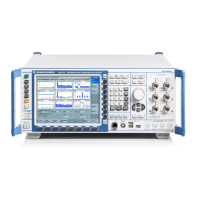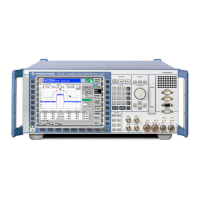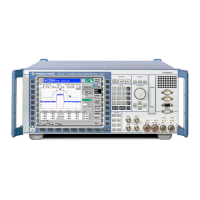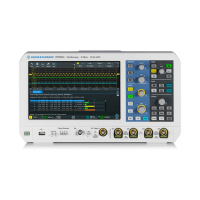System Overview
R&S
®
CMW500
59User Manual 1173.9463.02 ─ 06
●
Minimum: The displayed result represents the minimum value in a specified mea-
surement interval. Narrow peaks cannot be smoothed out due to averaging.
●
Maximum: The displayed result represents the maximum value in a specified mea-
surement interval.
Fig. 3-2: Detector Type
The measurement interval varies from one measurement to another; it is typically a par-
ticular time or frequency interval.
Detector and statistics type settings can be combined. E.g. in the GPRF Power mea-
surement, the following results are available:
●
Statistics type: Current, Detector: RMS:
The current trace, calculated from RMS-averaged values over the specified "Mea-
surement Length".
●
Statistics type: Current, Detector: Minimum:
The current trace, calculated from minimum values within the "Measurement Length".
●
Statistics type: Current, Detector: Maximum:
The current trace, calculated from maximum values within the "Measurement
Length".
●
Statistics type: Average, Detector: RMS:
The average trace, calculated from RMS-averaged values over the "Measurement
Length".
●
Statistics type: Minimum, Detector: Minimum:
The minimum trace, calculated from minimum values within the "Measurement
Length".
●
Statistics type: Maximum, Detector: Maximum:
The maximum trace, calculated from maximum values within the "Measurement
Length".
3.2.4.3 Peak Values
"Peak" values are calculated as the maximum of the magnitude times the sign:
●
For positive quantities such as the EVM, the peak value is equal to the maximum.
●
For negative quantities such as the I/Q offset and the I/Q imbalance, expressed in
dB, the peak value is equal to the minimum.
Measurements
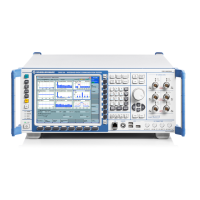
